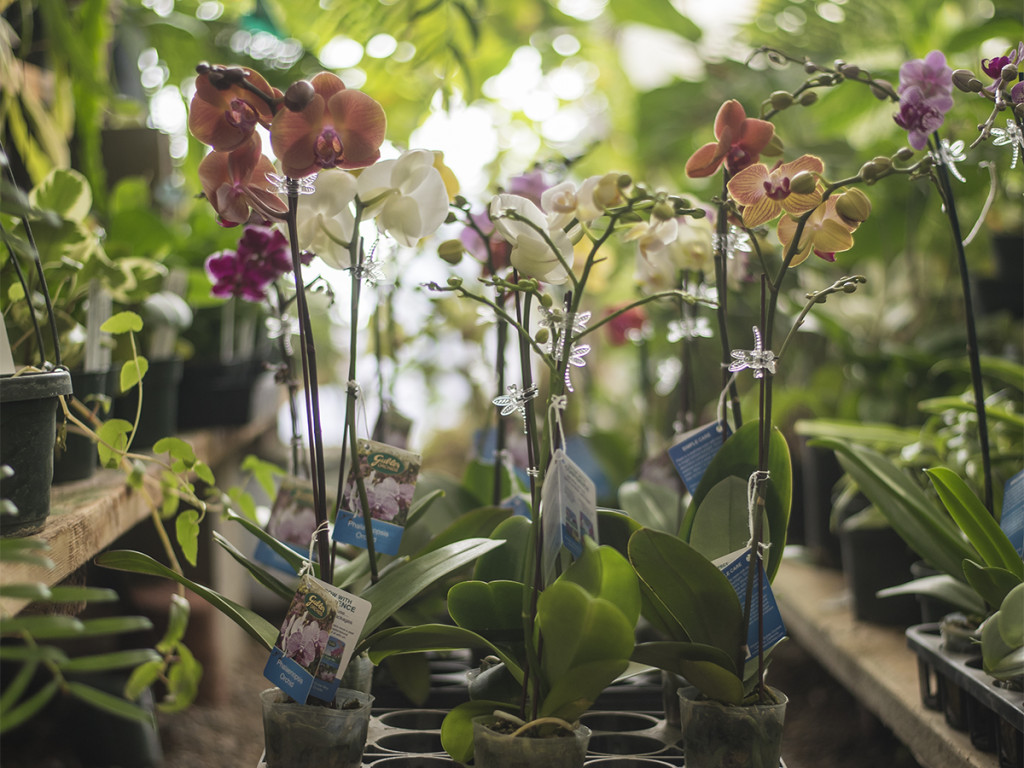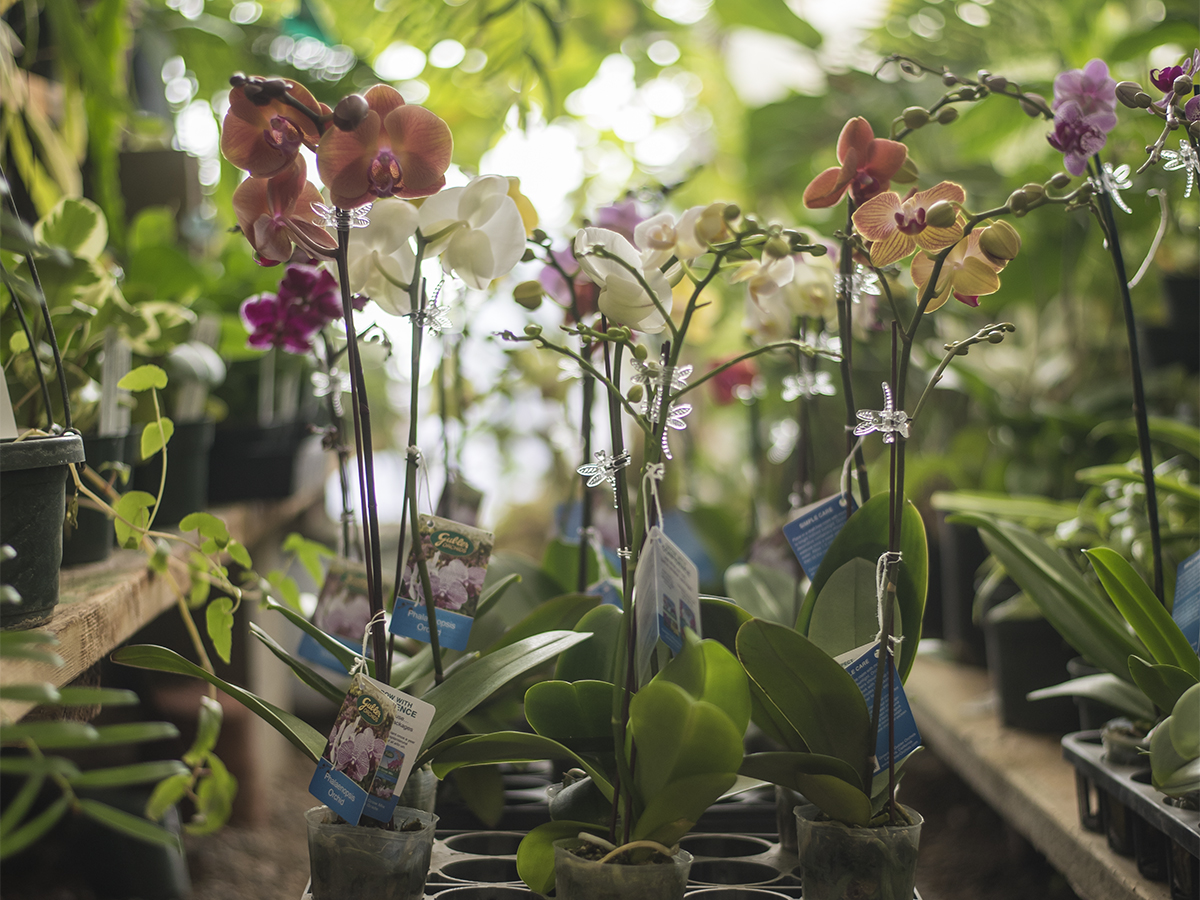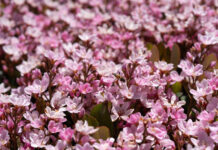
After making the trek up a lengthy, dirt-paved road, a team of Highlander staff members finally came before a set of wide, green gates. Taking note of the free public parking located right before the entrance for future reference, we turned to pass under the welcoming gateway. Almost immediately, we were greeted by an expanse of serene and shady slopes. Thick California native trees towered above visitors’ heads, the ends of branches seeming to reach the clouds.
“This is the Alder Canyon, our most popular area in the gardens. Most people like to come here for little picnics or naps,” explained Aram Ayrapetyan, a third-year political science major and communications director for the UCR Botanic Gardens, as he led us on a tour.
As UCR’s living museum, the botanic gardens aim to “inspire and facilitate education, research and interpretation of the natural world,” revealed the newly instated interim director of the gardens, Professor Emeritus Jodie Holt, in UCR Today. This mission is easily accomplished with little to no difficulty with its 3,500 species of plants spread over a massive 40 acres of land overlooking the campus.
Holt’s stated goal was plainly demonstrated to us as Ayrapetyan continued to guide us through four miles worth of dirt roads and trails accompanied by organically ethereal scents and sights –– but be sure to come prepared in a pair of sneakers unless you’re fine with struggling up the steeper slopes like some of us had to. Traversing through their collections such as the South African Garden, Southwest Deserts Section and Sierra Foothills Section, we managed to travel across the world in a matter of minutes as these individually curated gardens imitated an expanse of geographical regions.
Traversing through their collections such as the South African Garden, Southwest Deserts Section and Sierra Foothills Section, we managed to travel across the world in a matter of minutes as these individually curated gardens imitated an expanse of geographical regions.
More gently sloping, accessible pathways brought us to a dynamic array of horticultural collections. This gathering includes the Rose Gardens, Herb Garden, Butterfly Garden –– which, surprisingly, is actually brimming with a grand display of butterflies –– and Iris Garden, which unfortunately blooms into its collection of rainbow colors only once a year. Within the area is the botanic garden’s most popular attraction: The Geodesic Lath Dome. Home to a collection of subtropical plants, the dome serves as a unique location to relax and bask in a purely natural space exclusive from the lands beyond it.
The origins of the botanic gardens are rooted in its establishment back in 1963. There have since been exceptional changes made to the gardens, and it continues to expand with the welcome of new staff members including Holt. Known for her contributions to the 3-D film, “Avatar,” Holt motions to carry on her intent to “reach out to the community and encourage an interest in the amazing aspect of plants” through her agenda with the garden.
“At this time of growth and expansion of the UCR student body and campus footprint, the Botanic Gardens can play a key role in education, outreach and research by serving as UCR’s focal point for campus and community engagement. Our long-term vision includes enhanced programs that actively involve faculty, students, and staff from campus as well as greater involvement with the surrounding communities,” wrote Holt for UCR Today.
Developers of the botanic gardens have begun carrying out Holt’s vision with the addition of signage inside the gardens, new programs and the maintenance of existing trails. Other plans include the extension of new gardens to “highlight UCR faculty research and to showcase plants for year-round beauty in Riverside urban landscapes,” disclosed Ayrapetyan.
While still respecting the traditional, time-honored events of the botanic gardens, there are also plans to incorporate more actively engaging activities in partnership with campus clubs and organizations as well as the art and music departments.
This past weekend, the gardens hosted their 34th annual Friends of UC Riverside Botanic Gardens Fall Plant Sale. As one of the longest-standing events offered by the garden, the plant sale has been known to draw in 5,000 visitors from all throughout the Inland Empire at a time. As of spring 2017, the biannual plant sale will be revamped to “focus on and showcase our own unique plant offerings while showcasing local nurseries and vendors who sell plants suitable for our area,” expanded Ayrapetyan.
With the immense amount of visitors that the gardens accumulate each year, it is no surprise that the quality of the area is upheld through a generous network of volunteers and donors. There are various volunteer opportunities for students as the gardens are continuously seeking support in an effort to expand. “Last year, volunteers gave more than 5,000 hours of their time to the gardens and friends, old and new, generously supported the botanic gardens by making a donation,” as updates about the botanic gardens have revealed.
“The UCR Botanic Gardens has evolved from its inception in 1963 as a small research garden to the 40-acre gem that we cherish today,” Holt proudly declared. The impressive, well-tended gardens maintain their title as the jewel of UCR, displaying a variable and dynamic atmosphere, overflowing with nature’s offerings. Nestled at the base of the Box Springs Mountain, UCR students are fortunate to have the year-round beauty of the organic environment so readily accessible to them.








